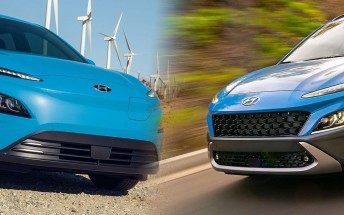New camera features coming to the Google Pixel 5
Google’s Pixel 5 doesn’t bring any major changes to the camera hardware. The 2X telephoto camera from the Pixel 4 has been replaced with a new 16MP ultra wide camera with f/2.2 aperture and 1µm pixels. Meanwhile, the main camera remains unchanged from the Pixel 4. It’s a 12.2MP 1/2.55” sensor with f/1.7 aperture, Dual Pixel AF, and OIS.
We don’t yet know how much the image quality can improved solely based on software advancements as we don’t yet have the device. Until then, let’s go over the camera features that are debuting with the Google Pixel 5 and Pixel 4a 5G (they have identical camera setups).
Google touted HDR+ with exposure bracketing, which Google promises will deliver “clearer, sharper photos”. However, we know that Google has been “exposure bracketing” since the original Pixel. We can only expect incremental improvements on this front.
Here’s something significant: you can now shoot portrait photos with Night Sight. Currently, there aren’t many smartphones that can combine these two features, so this is an interesting aspect: the camera will have to not only compute the subject and create a synthesized bokeh effect, but it can also do it with limited available lighting.
Portrait Light is a new feature that lets you brighten up a subject’s face where there may be too much shadow or if your subject is in front of a strongly lit sky. You can manually select where in the photo to add light on your subject’s face and Google Photos will be updated to let you do this with old photos as well.
In the video camera, there are three new stabilization modes: Locked, Active, and Cinematic Pan. The latter is the one that Google focused on the most during the livestream. Google says it took notes from both Hollywood directors and cinematography YouTube videos to create Cinematic Pan. This mode will basically shoot at 60 fps and then slow down the video by 2X to create smoother, more dramatic videos.
We are eager to test the Pixel 5’s camera to see just how much software can leverage essentially the same main camera hardware that Google has been putting in phones since the Pixel 3a.
Related
Reader comments
- Murat
- 11 Oct 2020
- npn
Not spending more money. But up to a point with software improvement. The obvious differences are on the big screens, and the TVs are obvious. Maybe not noticeable on 5-6 inch screens. But there is a huge difference between a Sony IMX363 and a Sony I...
- Anonymous
- 02 Oct 2020
- L@}
I would say go for pixel because of its software (guess its better than Samsung one ui). And camera quality should be better, and mainly, more reliable and consistent
- Anonymous
- 02 Oct 2020
- pQr
It hasn't proved to be good. I have a Pixel 3a and the sensor is full of dead pixels, it is very bad when you zoom or when you use Night Sight on a tripod or when you capture dng files. I tried two other Pixel 3a, the severity and distribution o...







 Huawei
Huawei Samsung
Samsung Samsung
Samsung Apple
Apple Xiaomi
Xiaomi


